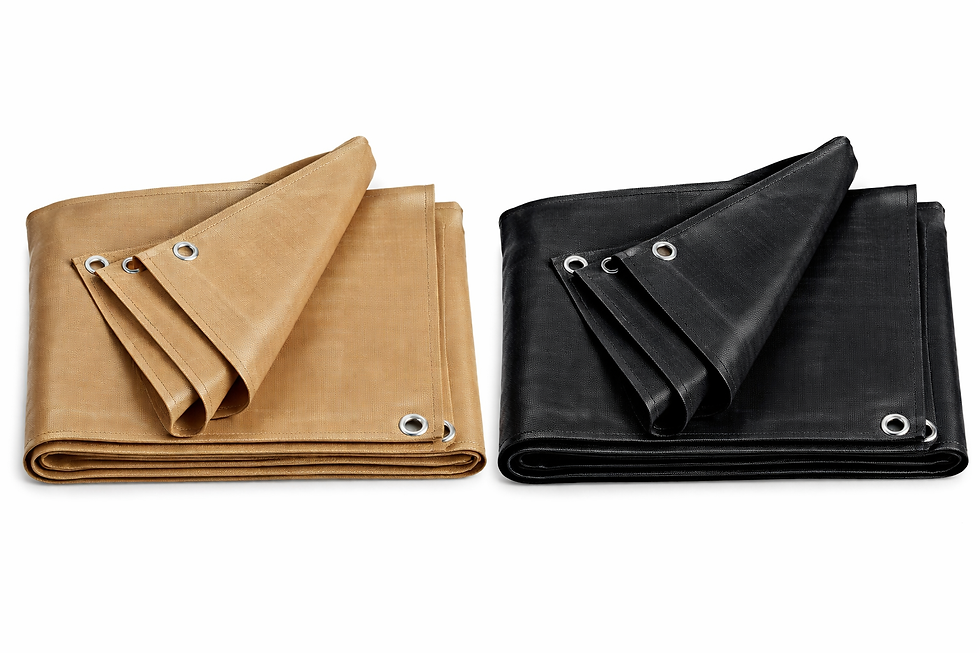How Do I Find The Right Blue Tarpaulin?
- Bradley Tomlinson

- May 1, 2023
- 2 min read
Blue tarpaulins, also known as blue tarps, are a type of waterproof cover made from woven polyethylene material. Blue Tarpaulin is commonly used as temporary roofing or shelter, as well as for a variety of other applications such as protecting goods during transportation or covering outdoor equipment. These are often used to cover damaged roofs or windows until permanent repairs can be made or to provide shelter for displaced individuals who have lost their homes. In such situations, blue tarpaulins act as an essential tool for providing protection from the elements and helping to maintain a basic level of comfort and safety. In addition to emergency situations, blue tarps are also commonly used for a range of other applications. For example, these are used to cover outdoor furniture, equipment, or vehicles, protecting them from rain, snow, and other weather conditions. These are also frequently used to cover building materials or other goods during transportation, helping to prevent damage or loss due to exposure to the elements. These also usually have reinforced grommets along the edges, which can be used to secure the tarpaulin in place using ropes or bungee cords. Blue tarpaulins are versatile and useful tools for a wide range of applications. Whether providing temporary shelter in an emergency or protecting goods during transportation, these are cost-effective and reliable ways to protect against the elements and maintain a basic level of safety and comfort.
Finding the right blue Tarpaulin depends on your specific needs and intended use. Here are some factors to consider when choosing a blue tarpaulin:
Durability: Consider how long you need the tarpaulin to last. If you only need it for a short period of time, a lower-quality tarpaulin may be sufficient. However, if you need the tarpaulin to last for an extended period of time or in harsh conditions, look for a more durable and heavy-duty tarpaulin.
Grommets: Check the number and placement of grommets on the tarpaulin. Grommets are metal or plastic rings that are used to secure the tarpaulin in place using ropes or bungee cords. The more grommets a tarpaulin has, the more options you have for securing it in place.
Size: Determine the size of the area you need to cover and choose a tarpaulin that will fit accordingly. Blue tarpaulins come in a range of sizes, so be sure to measure the area carefully before purchasing.
Material: Consider the type of material used to make the tarpaulin. Blue tarpaulins are typically made from woven polyethylene material, but the thickness and quality of the material can vary. Look for a tarpaulin that is made from high-quality, heavy-duty material that is designed to withstand the elements and resist tearing and punctures.
UV Resistance: Consider whether the tarpaulin is UV-resistant. If you plan to use the tarpaulin outdoors for an extended period of time, UV resistance can help prevent the material from deteriorating due to exposure to sunlight.
Color: Blue tarpaulins are available in different shades of blue. Consider which shade of blue will be most visible and easily identifiable in the context of your intended use.
By considering these factors, you can find the right blue tarpaulin for your specific needs and ensure that it will provide the necessary protection and durability.









Comments